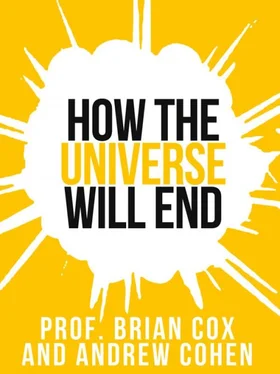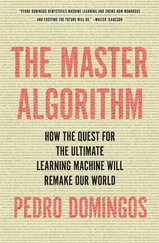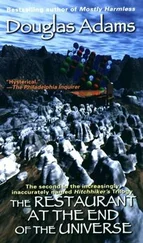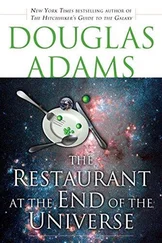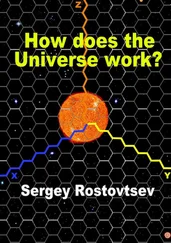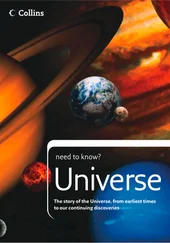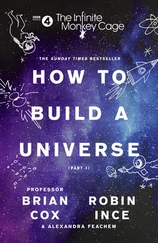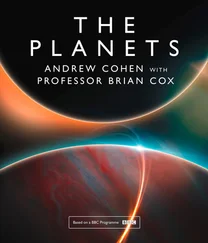
All the raw materials – every piece of every one and every thing you love, of every thing you hate, of every thing you hold precious – was assembled in the first few minutes of the life of the Universe, and then transformed in the hearts of stars or created in their fiery deaths. When you die, the pieces that make up your being will be returned to the Universe.
This cycle of death and rebirth is also happening on a cosmic scale: in the deaths of old stars, new stars are born. And ultimately, the life of Universe itself will succumb to this cycle.
This process began 13.75 billion years ago with the Big Bang – and what followed was the embryonic period of the Universe, known as the Primordial Era. For the first 100 million years, the conditions were far too violent for stars to form. This changed when the Universe had expanded and cooled sufficiently for the weak force of gravity to begin to clump the primordial dust, gas and dark matter into galaxies. With this came the dawning of the second great epoch in the life of our universe: the Stelliferous Era.
This is the phase of the Universe we live in. This is the age of stars, and of light.
There are many more stages of life and change still to come in our Universe, and yet we can confidently make predictions about its future. By observing the life cycles of the stars above us we can map out the remaining years of our universe’s life.
Stars – huge bodies of gas – exist in an uneasy equilibrium. Their gravity acts to compress them, which heats them up until the electromagnetic repulsion between the hydrogen atoms is overcome and they fuse together to make helium. This releases energy, which keeps the star up. When the hydrogen runs out, the outward pressure disappears; gravity regains the upper hand and the structure of the star changes dramatically. The core collapses rapidly, leaving a shell of hydrogen and helium behind. Within the shrinking core the temperature rises until, at 100 million degrees Celsius, a new fusion process is triggered. At these temperatures helium nuclei can overcome their mutual electromagnetic repulsion and wander close enough together to fuse – the star begins to burn helium. This transfer from hydrogen to helium fusion has two profound effects: firstly, sufficient energy is released to halt the stellar collapse, so the star stabilises and rapidly swells. This is the beginning of its life as a red giant. Secondly, it fuses into existence the element vital for life: carbon-12. This is where all the carbon in the Universe comes from; every carbon atom in every living thing on the planet was produced in the heart of a dying star.
Конец ознакомительного фрагмента.
Текст предоставлен ООО «ЛитРес».
Прочитайте эту книгу целиком, купив полную легальную версию на ЛитРес.
Безопасно оплатить книгу можно банковской картой Visa, MasterCard, Maestro, со счета мобильного телефона, с платежного терминала, в салоне МТС или Связной, через PayPal, WebMoney, Яндекс.Деньги, QIWI Кошелек, бонусными картами или другим удобным Вам способом.
